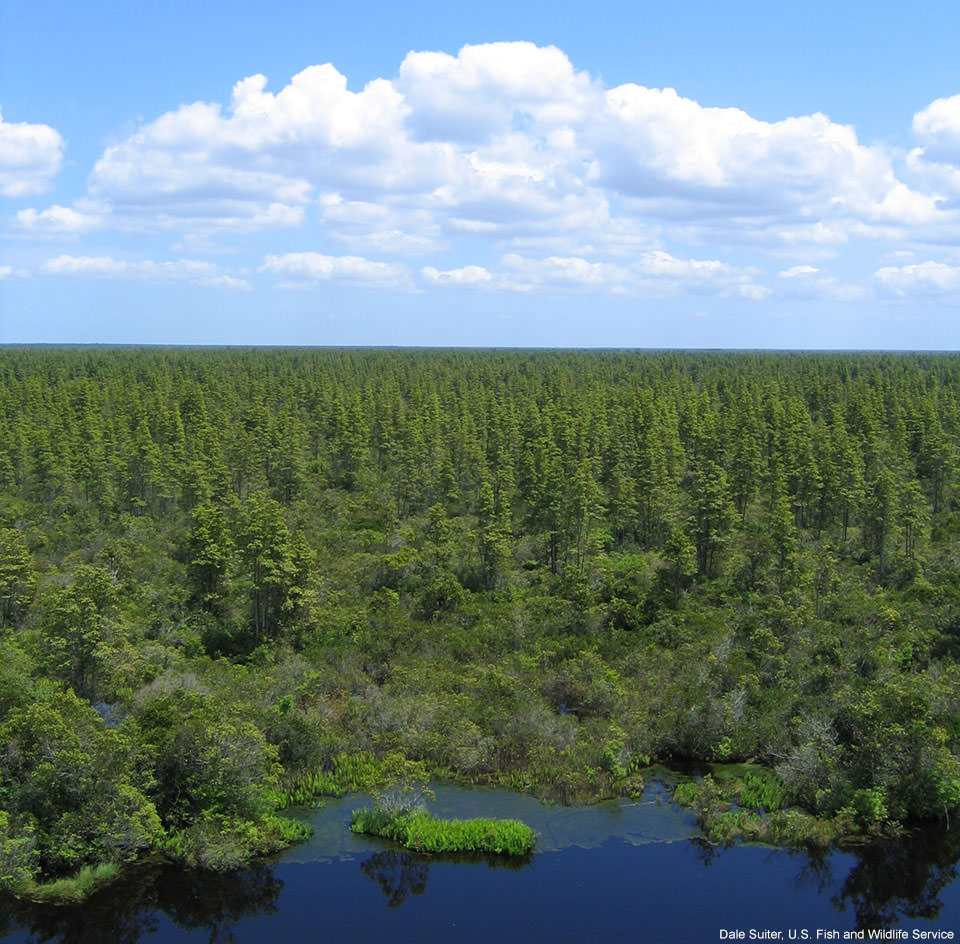What is a pocosin?
A pocosin is a wetland bog with sandy peat soil and woody shrubs throughout.

Pocosin Lakes National Wildlife Refuge, North Carolina.
Pocosins are generally found along the Atlantic coastal plain of the United States, from southern Virginia to northern Florida. These areas typically occur in broad, low-lying shallow basins that do not drain naturally. Pocosins are formed by the accumulation of organic matter, resembling black muck, which builds up over thousands of years. This accumulation of material causes the soil to be highly acidic and nutrient-deficient.
At one time, pocosins were prominent ecosystems in the southeastern United States, but they disappeared rapidly due to their perceived low value for the environment and high value for land development. In reality, restoring healthy pocosin wetlands provides important benefits to terrestrial and aquatic ecosystems, as well as human communities: They provide wildlife habitat, lessen the frequency and severity of wildfires, sequester carbon, nitrogen, and mercury (known as a carbon sink), protect the water quality of estuaries, and control flooding in low-elevation coastal areas. Pocosin restoration also plays a key role in the adaption of ecosystems to sea level rise by preventing soil loss and promoting soil formation.
Get Social
More Information
Did you know?
The word pocosin comes from an Eastern Algonquian word meaning "swamp-on-a-hill." A more accurate description of a pocosin, however, would be a "raised bog." The city of Poquoson, Virginia, located on the state's coastal plain in the Hampton Roads metropolitan area, derives its name from this geographic feature.

Last updated: 06/16/24
Author: NOAA
How to cite this article